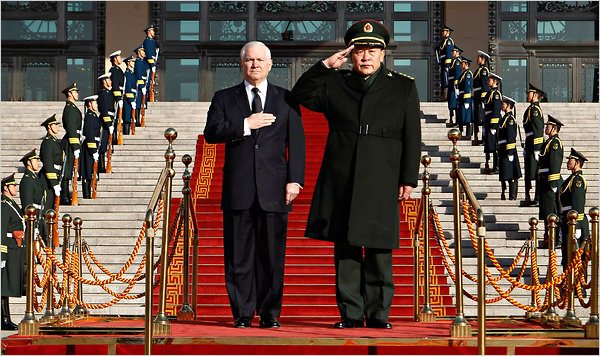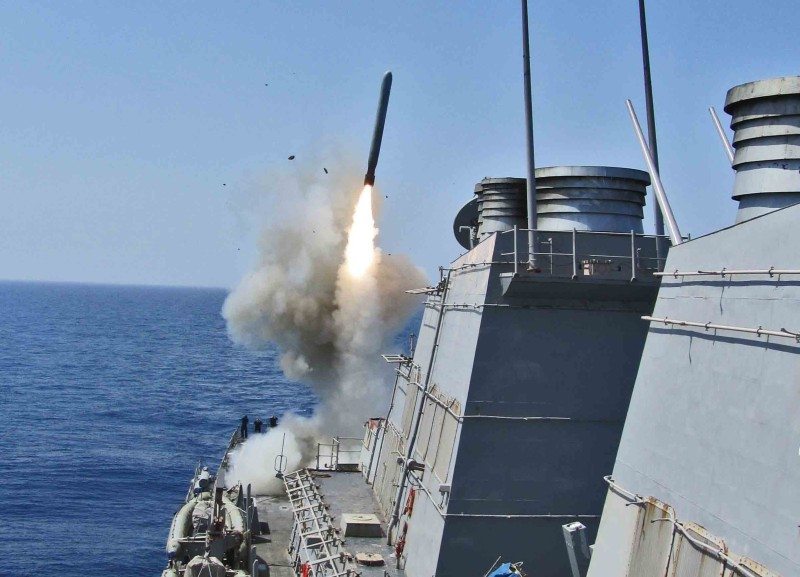China on Thursday issued a white paper on national defense, aiming to enhance its military’s transparency and boost the world’s trust in its commitment to peaceful development.
The document, the seventh of its kind the Chinese government has issued since 1998, says China will never seek hegemony, nor will it adopt the approach of military expansion now or in the future, no matter how its economy develops.
The white paper, titled “China’s National Defense in 2010,” gives an overall picture of the country’s national defense ranging from the security environment and national defense policy to defense expenditure and arms control.
Peaceful Development
The basic purpose of the white paper is to deepen trust and dispel misgivings with the manifesto of the national defense policy, said Chen Zhou, a research fellow with the PLA’s Military Science Academy.
China’s commitment to peaceful development and a national defense policy which is defensive in nature have been underlined in all the seven editions of the white paper since 1998.
The pursuit of a national defense policy which is defensive in nature is determined by China’s development path, its fundamental aims, its foreign policy, and its historical and cultural traditions, the latest edition of the white paper says.
The white paper says the world remains peaceful and stable at large, but the international security situation has become more complex and military competition remains fierce. “China is meanwhile confronted by more diverse and complex security challenges.”
It defines the goals and tasks of China’s national defense in this new era as safeguarding national sovereignty, security and interests of national development; maintaining social harmony and stability; accelerating the modernization of national defense and the armed forces; maintaining world peace and stability.
Defense Expenditure
In the face of concerns over China’s growing defense expenditure, the white paper says the increase has been kept at a reasonable and appropriate level.
China’s defense expenditure grew by 17.5 percent in 2008 and 18.5 percent in 2009. The defense budget for 2010 is 532.115 billion yuan (81.2 billion U.S. dollars), up 7.5 percent from 2009.
“The growth rate of defense expenditure has decreased,” says the white paper.
China’s defense expenditure mainly comprises expenses for personnel, training and maintenance, and equipment, with each accounting for roughly one third of the total.
Making public the share of equipment spending in defense expenditure, the white paper serves to allay concerns that China’s increased defense expenditure may trigger a regional arms race, observers said.
The share of China’s annual defense expenditure in the state financial expenditure has declined from 8.66 percent in 1998 to 6.49 percent in 2009, according to the white paper.
In the past two years, the increase in the defense expenditure has been used to improve support for troops and accomplish diversified military tasks, ranging from earthquake rescue and escort operations in the Gulf of Aden and waters off Somalia.
In view of the upward trend of purchasing prices and maintenance costs, China has moderately increased funding for high-tech weaponry and equipment and supporting facilities for that weaponry, the white paper says.
Confidence-Building
China works to create “equal, mutually beneficial and effective” mechanisms for military confidence-building, says the white paper.
Military confidence-building is an effective way to maintain national security and development, and safeguard regional peace and stability, the white paper says.
Qian Lihua, director of the Foreign Affairs Office with the National Defense Ministry, said the international community has paid great attention to China’s national defense and military development, but misunderstandings and worries also rise.
“There are views assuming that China’s defensive national defense policy might be changing,” Qian said. “Therefore, the publication of the white paper aims to create a security environment featuring mutual trust and cooperation.”
He said many countries consider the white paper as an important document to systematically study China’s defense policy and military strategy.
The PLA had conducted 47 joint military drills with foreign armies, an effort to “deepen international military exchanges and cooperation,” Qian said.
According to the white paper, in recent years, China has held extensive strategic consultations and dialogues with relevant countries in the field of security and defense to enhance mutual understanding and trust, and to strengthen communication and coordination.
To date, China has established mechanisms for defense and security consultation and dialogue with 22 countries.
In the last two years, senior PLA delegations have visited more than 40 countries, and defense ministers and chiefs of general staff from more than 60 countries have visited China.
Contribution to World Peace
China has consistently supported and actively participated in UN peacekeeping operations, making a positive contribution to world peace, the white paper says.
As of December 2010, China dispatched 17,390 military personnel to participate in 19 UN peacekeeping missions. Nine Chinese have lost their lives while serving in the missions.
As of December 2010, the PLA had 1,955 officers and other personnel serving in nine UN mission areas. China has dispatched more peacekeeping personnel than any other permanent member of the UN Security Council.
The Chinese government takes a prudent attitude toward the export of military products and related technologies, and has established a non-proliferation mechanism at its three levels of government, which covers producers and export companies.
The rise and fall of great powers over the past 500 years is a history of wars and hegemony. However, “China will take a different path of peaceful development and make contributions to world civilization,” Chen Zhou said.
[Download not found]
[Download not found]











